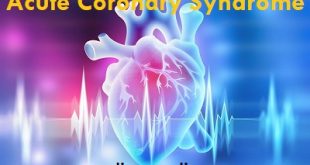Definition
Amoebiasis is a condition in which your gut (intestines) becomes infected with the parasite E. histolytica. Entamoebae are a group of single-celled parasites (living things that live in, or on, other living organisms) that can infect both humans and some animals. There are at least six species of entamoeba that can infect the human gut but only E. histolytica causes disease.
E. histolytica in Trophozoite form
E. histolytica is an amoeba. An amoeba is the name given to any single-celled microscopic animal with a jelly-like consistency and an irregular, constantly changing shape. Amoebae are found in water, soil and other damp environments. They move and feed by means of flowing extensions of their body, called pseudopodia. Amoebae are types of germs (protozoa). Protozoa is a more general name for microscopic, single-celled organisms. Some protozoa, including E. histolytica, are important parasites of humans.
When the parasite invades the intestines, these active trophozoites get into the muscles of the intestinal walls and consume the red blood cells within. They continue to eat away at the intestinal epithelium until oblong-shaped ulcers start to form. In very rare cases, approximately 1% of infected individuals, E. histolytica invades the other organs of the body through the bloodstream, thereby causing the formation of amoebic abscesses.
Life cycle of Amoebiasis
History of amoebiasis
The earliest records of bloody mucous diarrhea were found in Bhrigu Samhita (1000 BC). Asyrian and Babylonian texts (600 BC) also made a mention. Subsequently, division between amoebic and bacterial infection was made. The relationship between dysentery and liver involvement was noticed in 200 AD. Around 16th century, amoebiasis became worldwide due to the rapid growth of trade and settlements. Accurate description of invasive and noninvasive forms of amoebiasis was made by James Annersley in 19th century. Fredrich Losch (1875) discovered amoeba in St Petersburg (Russia). Emile Brumpt (1925) suggested existence of two types of parasites, the invasive (E. histolytica) and noninvasive (E. dispar). WHO (1997) gave clear guidelines for distinguishing both the species.
Epidemiology
The epidemiology of amoebiasis around the world is complicated by the existence of three different forms that are morphological identical but genetically distinct and include E.histolytica which is a known pathogen, E. dispar and E. moshkovskii which are non-pathogens. This is particularly relevant to the African continent as well as many other developing countries in the world, including Latin American and Asian countries, where there is lack of specific diagnostic tools. According to some studies conducted in some African countries from 6% to 75% of the population carry the parasite.
Causes of amoebiasis
The parasite may spread:
- Through food or water contaminated with stools
- Through fertilizer made of human waste
- From person to person, particularly by contact with the mouth or rectal area of an infected person
- Food handlers may transmit the cysts while preparing or handling food.
- The cysts are a relatively inactive form of the parasite that can live for several months in the soil or environment where they were deposited in feces. The microscopic cysts are present in soil, fertilizer, or water that’s been contaminated with infected feces.
Risk factors of Amoebiasis
People with the greatest risk for amoebiasis include:
- People who have traveled to tropical locations where there’s poor sanitation
- Immigrants from tropical countries with poor sanitary conditions
- People who live in institutions with poor sanitary conditions, such as prisons
- Men who have sex with other men
- People with compromised immune systems and other health conditions
- Alcoholism
- Cancer
- Malnutrition
- Older or younger age
- Pregnancy
- Use of corticosteroid medication to suppress the immune system
Manifestations of Amoebiasis
Individuals who become symptomatic usually develop progressive diarrhoea over seven to 21 days. Symptoms range from mild diarrhoea to severe dysentery with colitis and/or extra intestinal features. Symptoms of intestinal amoebiasis include:
- Diarrhoea with blood and mucous
- Foul smelling flatus
- Weight loss and malnutrition
- Abdominal pain
- Intermittent fever
- Rectal bleeding without diarrhoea (mainly children)
- Abdominal cramping
- Diarrhea
- Nausea and vomiting
- Loss of weight
- Fatigue
Patients whose livers are affected by these amoebic abscesses frequently exhibit fevers and experience pain on the upper right side of their abdomen, as well as liver tenderness, and jaundice. In extreme cases, jaundice can occur in the lungs and brain, transported through the intestines’ venous system.
Complications
- These are secondary to severe toxemia, perforation of the bowel, toxic megacolon, rupture of the hepatic abscess into pleura, lung, peritoneum, pericardium, skin and subcutaneous tissue.
- Rarely, a large hepatic abscess producing obstructive jaundice can occur.
- Fever, leukocytosis with elevated polymorphs, rise in hepatic enzymes and serum bilirubin are the accompaniments of the complications
Exams and Test
- The health care provider will perform a physical exam and will be asked about your medical history, especially if an individual have traveled overseas recently.
- Examination of the abdomen may show liver enlargement or tenderness in the abdomen.
- Tests that may be ordered include:
- Blood test for amoebiasis
- Examination of the inside of the lower large bowel (sigmoidoscopy)
- Stool test
- Microscope examination of stool samples, usually with multiple samples over several days
- Doctor may order an ultrasound or CT scan to check for lesions on your liver.
- If lesions appear, your doctor may need to perform a needle aspiration to see if the liver has any abscesses.
- Colonoscopy may be necessary to check for the presence of the parasite in your large intestine (colon).
- Antibody detection at the end of 1 week of invasive amoebiasis, indirect hemagglutination assay (IHA) and enzyme-linked immunosorbent assay (ELISA) are diagnostic.
Treatment
It is usually advised to be treated with medication to kill the parasite. Some of the medications includes:
- The drug diloxanide furoate is commonly used
- Antibiotics such as Metronidazole and tinidazole
- You may be given special rehydration drinks
- Rehydration drinks provide a good balance of water, salts and sugar. The small amount of sugar and salt helps the water to be absorbed better from the gut (intestines) into the body
- If you do become severely dehydrated, you may need admission to hospital so that you can be given fluids through a vein (intravenously)
- Occasionally, someone who develops fulminant colitis or a hole (perforation) in their bowel may need surgery to remove part of their intestine
Prevention
If you (or your child) have amoebiasis, the following are recommended to prevent the spread of infection to others:
- Wash your hands thoroughly after going to the toilet. Ideally, use liquid soap in warm running water, but any soap is better than none. Dry your hands properly after washing.
- If your child wears nappies, be especially careful to wash your hands after changing nappies and before preparing, serving, or eating food.
- If a potty has to be used, wear gloves when you handle it, dispose of the contents into a toilet, then wash the potty with hot water and detergent and leave it to dry.
- Don’t share towels and flannels.
- Don’t prepare or serve food for others.
- If clothing or bedding is soiled, first remove any stools (faeces) into the toilet. Then wash in a separate wash at as high a temperature as possible.
- Regularly clean with disinfectant the toilets that you use. With hot water and detergent, wipe the flush handle, toilet seat, bathroom taps, surfaces and door handles at least once a day. Keep a cloth just for cleaning the toilet (or use a disposable one each time).
- You should stay off work, school, college, etc, while you have amoebiasis. Your doctor will advise you when it is safe to return. Avoid contact with other people as far as possible during this time.
- Food handlers: if you work with food and develop diarrhoea or being sick (vomiting), you must inform your employer and immediately leave the food-handling area. If amoebiasis is confirmed, you should inform your employer and stay away from work until your doctor advises it is safe to return.
 Diseases Treatments Dictionary This is complete solution to read all diseases treatments Which covers Prevention, Causes, Symptoms, Medical Terms, Drugs, Prescription, Natural Remedies with cures and Treatments. Most of the common diseases were listed in names, split with categories.
Diseases Treatments Dictionary This is complete solution to read all diseases treatments Which covers Prevention, Causes, Symptoms, Medical Terms, Drugs, Prescription, Natural Remedies with cures and Treatments. Most of the common diseases were listed in names, split with categories.








I have suffered for many years with amoeba those medicine you
mentioned I have used with poor result what can I do
Consult a doctor to get better treatment.
female age of 50 continues to have bloody diarrhoea for certain number of days in every month in every year what’s causing it and how will you cures it
Possible causes of the bloody stool are as follows
Anal fissures
polyp
Hemorrhoids
Angiodysplasia
Inflammatory bowel disease (IBD)
Colorectal cancer
Diverticulosis and Diverticulitis